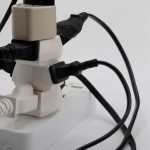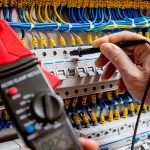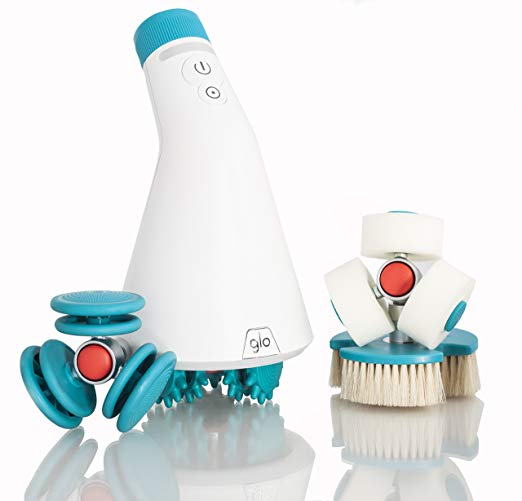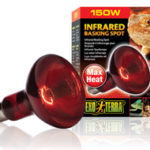Last Updated on 10 months by Francis
.jpg)
Understanding Electrical Breakers and Amps
How Many LED Lights Can Go on a 20 Amp Breaker?
Factors to Consider
Calculating Power Consumption of LED Lights
Calculating the Load on a 20 Amp Breaker
Case Study: Example Calculation
Ensuring Safety and Compliance
Potential Risks of Overloading a Breaker
Meeting Electrical Code Requirements
Tips for Proper Breaker and LED Light Installation
Consulting an Electrician
Using Dedicated Circuits
Proper Wiring Practices
When it comes to electrical installations, understanding the capacity and limitations of your breakers is essential. In particular, if you are considering installing LED lights, you may wonder how many lights can be safely connected to a 20 Amp breaker. To determine this, several factors must be taken into account.
Firstly, it is crucial to have a basic understanding of electrical breakers and amps. Electrical breakers are designed to protect the circuit from overloading, overheating, and electrical faults. Amps, short for amperes, refer to the flow rate of electric current. A 20 Amp breaker can handle a higher amperage load compared to a 15 Amp breaker, meaning it can support more electrical devices.
When calculating the number of LED lights that can be connected to a 20 Amp breaker, several factors must be considered. One of the most critical factors is the power consumption of the LED lights. LED lights are known for their energy efficiency and lower power consumption compared to traditional incandescent bulbs.
To determine the power consumption of LED lights, the wattage of each light must be known. The wattage represents the amount of power an electrical device consumes. By adding up the wattage of all the LED lights to be connected, you can calculate the total power consumption.
Next, it is important to calculate the load on the 20 Amp breaker. The load refers to the total amount of current drawn by all the electrical devices connected to the breaker. This can be calculated by dividing the total power consumption in watts by the voltage of the electrical system (usually 120 volts in residential settings).
A case study can further illustrate this calculation. Let’s say you have 10 LED lights, each with a wattage of 10 watts. The total power consumption would be 100 watts. Dividing this by the voltage of 120 volts gives a current of approximately 0.83 Amps. Since it is below the 20 Amp capacity of the breaker, it is safe to connect these 10 LED lights to the 20 Amp breaker.
Safety and compliance are paramount when dealing with electrical installations. Overloading a breaker can lead to overheating, fire hazards, and potential damage to the electrical system. It is crucial to understand the potential risks and comply with electrical code requirements.
To ensure proper breaker and LED light installation, it is recommended to consult an electrician who can assess your specific situation and provide guidance. They can help determine the appropriate number of LED lights that can be connected to a 20 Amp breaker and ensure compliance with electrical codes.
Using dedicated circuits for high-power devices, such as in a commercial setting, can prevent overloading and distribute the electrical load more effectively. Proper wiring practices, such as using appropriate wire gauges and avoiding extension cords, should also be followed to ensure safe and efficient electrical connections.
By understanding the capacity of your breaker, calculating power consumption, and following safety guidelines, you can safely install and connect LED lights to a 20 Amp breaker, enjoying energy-efficient lighting in your space.
Contents
Key takeaway:
- Understanding Electrical Breakers and Amps:
- Potential Risks of Overloading a Breaker: Overloading a breaker can lead to electrical hazards such as fires or damage to appliances.
- Meeting Electrical Code Requirements: It is important to follow electrical code requirements and restrictions to ensure safety and compliance.
- How Many LED Lights Can Go on a 20 Amp Breaker?
- Factors to Consider: The number of LED lights that can be connected to a 20 amp breaker depends on various factors such as the power consumption of the lights and the load limit of the breaker.
- Calculating Power Consumption of LED Lights: Calculate the power consumption of each LED light by multiplying its wattage by the number of lights.
- Calculating the Load on a 20 Amp Breaker: To determine the load on a 20 amp breaker, add up the power consumption of all the LED lights connected to the circuit.
- Case Study: Example Calculation: An example calculation can help illustrate how many LED lights can be safely connected to a 20 amp breaker.
- Ensuring Safety and Compliance:
- Tips for Proper Breaker and LED Light Installation: Follow proper installation techniques for both breakers and LED lights to ensure safety and compliance.
- Consulting an Electrician: If unsure about the electrical capacity or installation process, consult a professional electrician for guidance.
- Using Dedicated Circuits: Consider using dedicated circuits for high-power LED lights to avoid overloading the breaker.
- Proper Wiring Practices: Adhere to proper wiring practices, including using the correct wire gauge, to ensure safe and efficient operation of the LED lights.
- Conclusion: Properly Installing LED Lights and Breakers:
- By understanding the electrical capacity, following code requirements, and considering various factors, you can safely determine the number of LED lights that can be connected to a 20 amp breaker.
Understanding Electrical Breakers and Amps
When it comes to electrical breakers and how many LED lights can go on a 20 amp breaker, it’s important to have a solid understanding of this fascinating subject. In this section, we’ll embark on a journey into the world of electrical breakers and amps. We’ll take a closer look at the potential risks of overloading a breaker and the importance of meeting electrical code requirements. So, fasten your seatbelts and get ready to unravel the mysteries of electrical systems!
Potential Risks of Overloading a Breaker
The potential risks of overloading a breaker should be taken into consideration when dealing with electrical systems:
- Fire Hazard: Overloading a breaker can lead to overheating of the electrical wiring and components, increasing the risk of a fire.
- Damage to Electrical Equipment: When a breaker is overloaded, it can cause damage to electrical equipment connected to the circuit, such as appliances, electronics, and lighting fixtures.
- Tripping Breakers: Overloading a breaker can cause it to trip frequently, resulting in inconvenience and potential damage to the breaker itself.
- Electrical Shock: In extreme cases, overloading a breaker may lead to electrical shock if the wiring or equipment becomes damaged as a result.
To avoid these potential dangers, it is important to ensure that the electrical load on a breaker does not exceed its maximum capacity. This can be achieved by distributing the load evenly across multiple breakers if necessary, using dedicated circuits for high-powered devices, and consulting with an electrician for proper installation and wiring practices. By considering the potential risks of overloading a breaker, the safety of the electrical system can be maintained.
Meeting Electrical Code Requirements
Meeting electrical code requirements is essential to ensure safety and compliance when installing electrical breakers for LED lights.
- Check local regulations: Research and familiarize yourself with the electrical code requirements specific to your area. Each region may have different rules and standards that need to be followed.
- Proper breaker sizing: Select a breaker that is appropriately sized for the load of your LED lights. The electrical code will provide guidelines on the maximum load allowed for a specific breaker size.
Pro-tip: When in doubt, consult with a licensed electrician who is knowledgeable about local electrical codes. They can provide guidance and ensure that your installation meets all requirements for a safe and compliant electrical system.
How Many LED Lights Can Go on a 20 Amp Breaker?
Curious about how many LED lights can be connected to a 20 amp breaker? Get ready to dive into the world of electrical loads and power consumption. In this section, we’ll explore the factors to consider when determining the number of LED lights that can safely operate on a 20 amp breaker. We’ll also take a look at how to calculate the power consumption of LED lights and the load on the breaker. Plus, we’ll even walk through a real-life case study to illustrate the calculation process. Let’s get switched on to the details!
Factors to Consider
When considering factors to install LED lights on a 20 amp breaker, it is important to take into account the power consumption of the lights and the maximum load capacity of the breaker.
| Factors to Consider | Details |
| Power Consumption of LED Lights | LED lights have different power ratings, typically measured in watts. Consider the wattage of each individual light and add up the total power consumption. |
| Maximum Load Capacity of the 20 Amp Breaker | A 20 amp breaker has a maximum load capacity of 2400 watts (20 amps x 120 volts). Ensure that the total power consumption of the LED lights does not exceed this limit. |
| Number of LED Lights | The number of LED lights you can connect to a 20 amp breaker depends on their individual power consumption. Divide the maximum load capacity of the breaker by the power consumption of each light to determine the maximum number of lights. |
Once you have considered these factors, you can safely install the appropriate number of LED lights on a 20 amp breaker without overloading it. Remember to consult an electrician if you have any doubts or questions about the installation process.
Calculating Power Consumption of LED Lights
To calculate the power consumption of LED lights, follow these simple steps:
- Find the wattage of each LED light bulb, which is typically specified on the packaging or product specifications.
- Add up the wattage of all the LED light bulbs that will be connected to the 20 amp breaker to determine the total power consumption.
- To convert the power consumption from watts to amps, divide the wattage by the supply voltage (commonly 120 volts in residential settings). This will provide the current draw in amps for each LED light bulb.
- Divide the maximum amp rating of the breaker (in this case, 20 amps) by the current draw of each LED light bulb. This will give you the maximum number of LED lights that can be safely connected to the breaker.
Calculating the power consumption of LED lights is crucial to ensure that the breaker’s maximum capacity is not exceeded. This helps prevent circuit overloading and potential electrical hazards.
Calculating the Load on a 20 Amp Breaker
When determining the load on a 20 amp breaker, follow these steps:
- Calculate the power consumption of each LED light in watts. This information is typically available on the packaging or product specifications.
- Add up the power consumption of all the LED lights that will be connected to the breaker.
- To determine the load, divide the total power consumption by the voltage. For a 20 amp breaker, the voltage is generally 120 volts.
- Multiply the result by 0.8 to consider the maximum load that should be placed on a breaker for safety and to prevent overloading.
- If the calculated load is equal to or less than 16 amps (80% of 20 amps), the LED lights can be connected to the 20 amp breaker.
It is important to note that these calculations are based on standard assumptions and guidelines. Other factors such as wiring conditions, temperature, and additional loads on the circuit should also be taken into account for accurate load calculations. It is always recommended to consult a qualified electrician to ensure proper installation and compliance with electrical code requirements.
Case Study: Example Calculation
Below is a table illustrating an example calculation for determining how many LED lights can go on a 20 amp breaker:
| LED Light Specification | Power Consumption (Watts) | Number of Lights | Total Power Consumption (Watts) |
| LED Light A | 10 | 4 | 40 |
| LED Light B | 8 | 6 | 48 |
| LED Light C | 5 | 10 | 50 |
| LED Light D | 7 | 5 | 35 |
| LED Light E | 6 | 8 | 48 |
In this case study, we consider various LED light specifications and their respective power consumption. LED Light A consumes 10 watts and there are 4 of these lights, resulting in a total power consumption of 40 watts. Similarly, LED Light B consumes 8 watts and there are 6 of these lights, resulting in a total power consumption of 48 watts. The same calculation is performed for LED Light C, D, and E.
To determine how many LED lights can go on a 20 amp breaker, we need to consider the total power consumption of all the lights. In this example calculation, the total power consumption of all the lights is 221 watts. To calculate the load on a 20 amp breaker, we convert amps to watts using the formula: Power (watts) = Current (amps) x Voltage (volts). Assuming a standard voltage of 120 volts, the maximum load on a 20 amp breaker is 2400 watts.
Pro-tip: When calculating the load on a breaker, it’s important to consider not just the power consumption of the lights, but also any other devices or appliances connected to the same circuit. Ensure that the total load does not exceed the capacity of the breaker to prevent overloading and potential electrical hazards.
Ensuring Safety and Compliance

Photo Credits: Infraredforhealth.Com by Jacob Anderson
When it comes to installing LED lights, safety and compliance should be top priorities. In this section, we’ll uncover essential tips for proper breaker and LED light installation, the importance of consulting an electrician, the benefits of using dedicated circuits, and the significance of following proper wiring practices. So, if you’re ready to shed light on the best practices for ensuring safety and compliance in your LED lighting project, keep reading!
Tips for Proper Breaker and LED Light Installation
When it comes to proper breaker and LED light installation, it’s important to follow these steps:
- Ensure that the breaker is the correct size and type for the electrical circuit.
- Turn off the power to the circuit before starting any installation work.
- Carefully connect the wiring to the breaker and securely tighten all connections.
- Properly mount the breaker in the electrical panel, making sure it is secure and aligned correctly.
- Attach the LED lights according to the manufacturer’s instructions, ensuring proper wiring and connections.
- Double-check all connections to ensure they are tight and secure.
Pro-tip: It is always recommended to consult a professional electrician for any electrical installations, especially if you have limited experience or are unsure about the process. They can provide guidance and ensure that everything is done correctly and safely.
Consulting an Electrician
When it comes to electrical matters, it is crucial to consult an electrician for expert advice and guidance. Consulting an electrician is essential for several reasons:
- Expertise: Electricians possess the knowledge and experience to assess your specific electrical requirements and ensure the correct installation of LED lights and breakers.
- Safety: Electricians are aware of the potential risks and hazards associated with electrical work. They can identify possible dangers and take the necessary precautions to protect the safety of your electrical system.
- Code Compliance: Electricians are well-versed in local electrical codes and regulations. They can guarantee that your LED lights and breaker installations adhere to these codes, thereby preventing any legal issues and ensuring the safety of your property.
- Certification: Electricians undergo rigorous training and certification processes to become qualified professionals. By consulting an electrician, you can have confidence that your electrical work is being handled by someone with the necessary skills and qualifications.
Remember, electrical work can be hazardous if not conducted correctly, so it is always best to leave it to the professionals. When in doubt, consult an electrician to ensure the safe installation of your LED lights and breakers in compliance with regulations.
Pro-tip: When hiring an electrician, make sure to select a licensed and insured professional to ensure you receive the best service and peace of mind.
Using Dedicated Circuits
When it comes to installing LED lights, using dedicated circuits is crucial for ensuring safety and efficiency.
- Prevents overload: Using dedicated circuits for LED lights helps prevent overloading of the electrical system. Each circuit is specifically designated for a certain number of lights, ensuring that the load on the circuit does not exceed its capacity.
- Improves performance: By using dedicated circuits, you can provide a consistent and uninterrupted power supply to your LED lights. This helps to optimize their performance and eliminates the risk of power fluctuations or disruptions.
- Reduces interference: Dedicated circuits isolate the electrical flow for your LED lights, separating them from other appliances or devices on different circuits. This reduces the chances of interference or dimming of the lights caused by other electrical loads in the system.
- Enhances safety: Dedicated circuits for LED lights minimize the risk of electrical accidents such as short circuits or electrical fires. By ensuring that the circuit is only carrying the load of the lights, it reduces the chances of overheating or electrical faults.
- Simplifies troubleshooting: Using dedicated circuits makes it easier to identify and troubleshoot any issues related to your LED lights. If there is a problem in one circuit, it can be isolated and repaired without affecting the operation of other lights in different circuits.
Proper Wiring Practices
When it comes to proper wiring practices for installing LED lights on a 20 amp breaker, it’s important to follow these steps:
- Ensure that the wiring is done by a qualified electrician to guarantee safety and compliance with electrical code requirements.
- Use wires of the appropriate gauge to handle the electrical load of the LED lights. Consult an electrician to determine the right wire size for your specific installation.
- Make sure that the connections between the wires and the LED lights are secure and properly insulated to prevent any electrical hazards.
- Avoid overcrowding the circuit by installing too many LED lights. Calculate the power consumption of each LED light and ensure that the total load on the 20 amp breaker does not exceed its capacity.
- If you need to install a large number of LED lights, consider using dedicated circuits to distribute the load evenly and prevent overloading the breaker.
- Label the wiring and circuit breaker properly to easily identify and troubleshoot any issues that may arise in the future.
Remember, following proper wiring practices is crucial to ensure the safe and efficient operation of your LED lights and to prevent any electrical problems. Always consult with a professional electrician if you are unsure about any aspect of the installation process.
Some Facts About How Many LED Lights Can Go on a 20 Amp Breaker:
- ✅ It is not safe to overload a 20 amp circuit breaker with more than 12 LED lights. (Source: Conquer All Electrical)
- ✅ Each LED bulb consumes half an amp, so a 20 amp circuit can support up to 38 LED lights. (Source: Conquer All Electrical)
- ✅ The maximum load that can be safely shared by a 20 amp circuit is limited and cannot be shared by other devices. (Source: Conquer All Electrical)
- ✅ A 20 amp 120 volt circuit can support a maximum load of 2,400 watts, but incandescent bulbs may draw up to 1.6 amps. (Source: Conquer All Electrical)
- ✅ Running more than 12 LED lights on a 20 amp circuit can cause damage and overheating. (Source: Conquer All Electrical)
Frequently Asked Questions
How many LED lights can go on a 20 amp breaker?
According to the reference data, the number of LED lights that can be installed on a 20 amp breaker depends on the wattage of the lights and the total wattage capacity of the circuit.
Key Points:
- The total capacity of a 20 amp breaker is 1920 watts.
- To estimate the number of LED lights, divide the maximum circuit wattage (1920 watts) by the wattage rating of the LED bulb.
- For example, if the LED bulb is rated at 5.5 watts, then 1920 watts divided by 5.5 watts equals 349 LED light bulbs that can be safely installed.
- It is important to consider the combined wattages of different types of LED light sources and not exceed the total capacity.
Can I use a 20 amp circuit breaker for kitchen appliances?
Yes, certain mid-range kitchen appliances like toasters, coffee machines, and blenders can be safely used on a 20 amp circuit.
Key Points:
- It is important to follow the manufacturer’s recommendations and not exceed the circuit’s load capacity.
- A 20 amp breaker can handle up to 2400 watts, but for safety, it is recommended to only have 1920 watts flowing through.
- Make sure to factor in the wattage of each appliance and avoid overloading the circuit.
What is the 80% limit rule for a 20 amp breaker?
The 80% limit rule states that the maximum continuous load on a 20 amp breaker should not exceed 80% of its rated load.
Key Points:
- To calculate the 80% limit, multiply the breaker’s amp rating by 0.8.
- For a 20 amp breaker, the maximum continuous load should not exceed 16 amps.
- It is important to leave a margin for safety and prevent overheating or tripping of the breaker.
Can I use a 20 amp breaker for power tools like table saws?
Yes, power tools like table saws in garages generally require a dedicated 20 amp circuit.
Key Points:
- A dedicated circuit is a circuit with its own breaker, designed for a single appliance with high wattage demand.
- It is important to consult the local electrical code and follow the recommendations of building inspectors.
- Using a dedicated 20 amp circuit for power tools ensures that the circuit can handle the current surge without overloading.
What is the maximum number of lights allowed on a 20 amp breaker?
According to the reference data, a 20 amp breaker of 120 volts can handle up to 40 lights of 50 watts each, while a 20 amp breaker of 240 volts can handle up to 75 lights of 50 watts each.
Key Points:
- When installing light fixtures, it is advisable to install no more than 10 on a 20 amp circuit due to the 80% limit rule.
- The total current draw of the lights should not exceed the load capacity of the circuit.
- It is important to calculate the load capacity using Ohm’s Law and leave a margin for safety.
Are LED bulbs recommended for a 20 amp breaker?
Yes, LED bulbs like SYLVANIA ECO LED A19 Light Bulb are recommended for high-wattage lights on a 20 amp breaker. LED bulbs are power-saving and can have up to 192 bulbs on a 20 amp breaker.
Key Points:
- LED bulbs draw less amps than incandescent bulbs, making them more efficient and suitable for a 20 amp circuit.
- LED lighting is environmentally friendly and cost-effective.
- It is important to consider the wattage of the LED bulbs and not exceed the recommended number of bulbs for a 20 amp circuit breaker.

.jpg)






